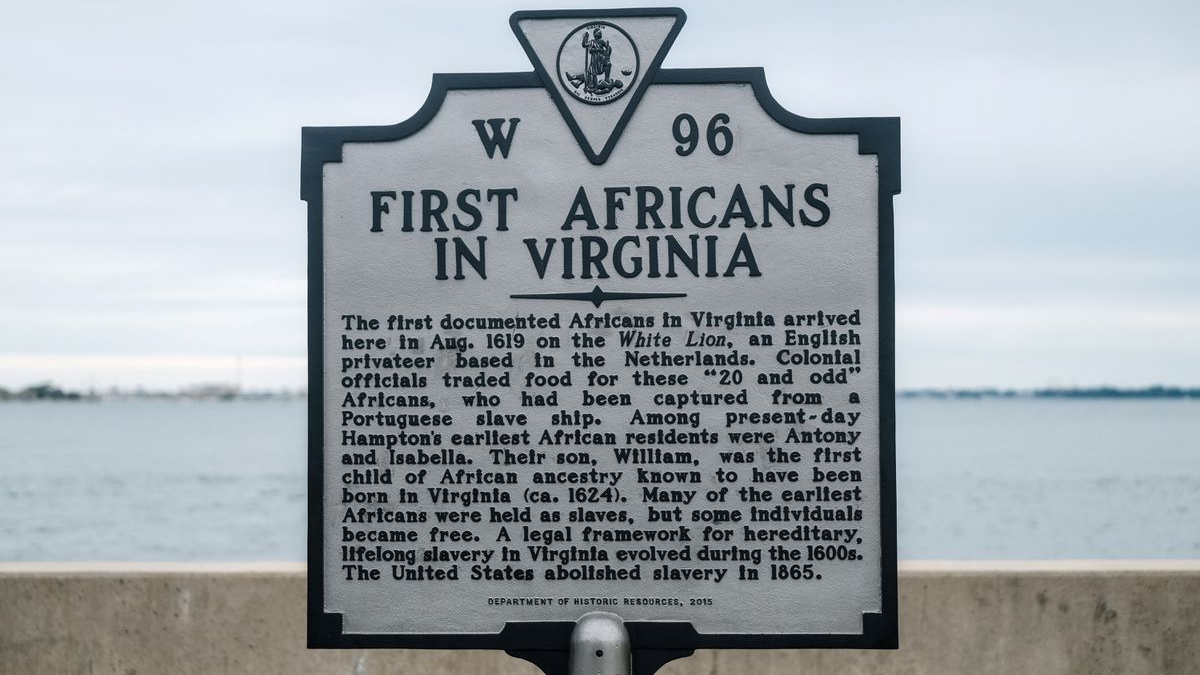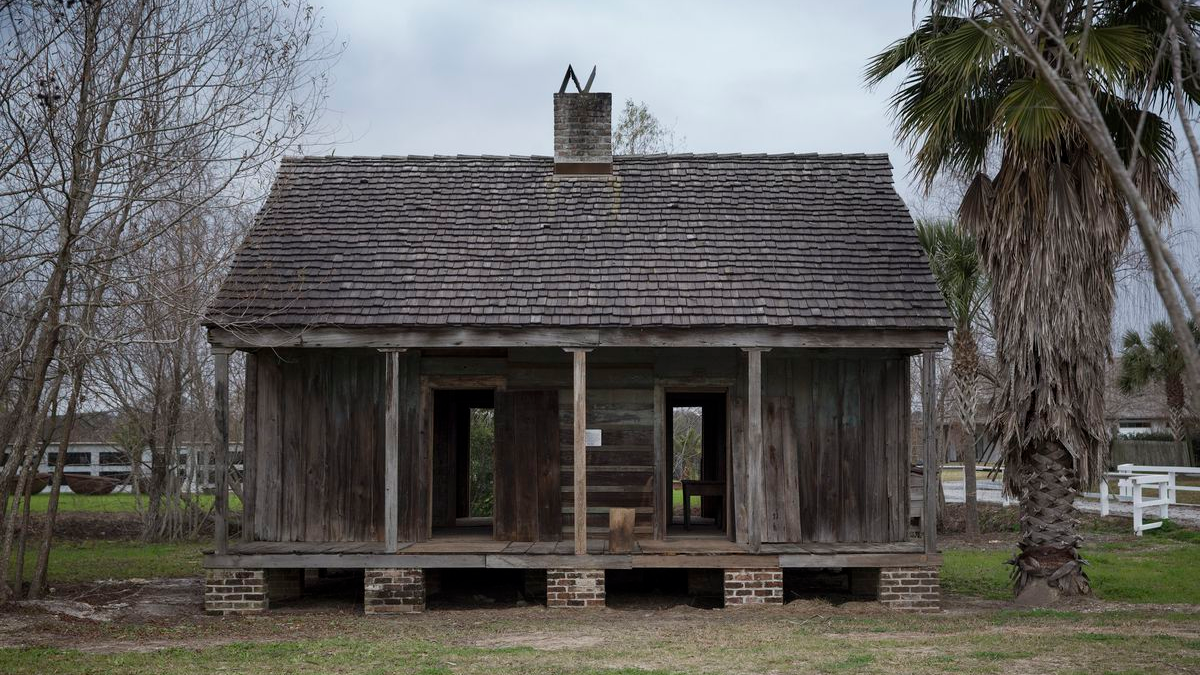
A sign commemorating the arrival of the first Africans is displayed at Chesapeake Bay, Hampton, Virginia, U.S., August 24, 2019. /Reuters
A sign commemorating the arrival of the first Africans is displayed at Chesapeake Bay, Hampton, Virginia, U.S., August 24, 2019. /Reuters
It all started with 20 enslaved people who were brought from Africa to Virginia in 1619. They were followed by hundreds of thousands of African slaves who fueled the rise of the United States – many of them whipped, raped and killed for their skin color in the process.
The majority of enslaved Africans were brought to British North America during the 18th century. At the time of the Declaration of Independence, slavery was legal in each of the newly created 13 states. Before the American Revolutionary War in 1775, slaves comprised about one-fifth of the population.
"The expansion of slavery in the first eight decades after American independence drove the evolution and modernization of the country … The South became a continental cotton empire, and the U.S. grew into a modern industrial and capitalist economy," historian Edward E. Baptist reveals in his book "The Half Has Never Been Told."

The exterior of a slave quarters at the Whitney Plantation in Wallace, Louisiana, U.S., January 13, 2015. /Reuters
The exterior of a slave quarters at the Whitney Plantation in Wallace, Louisiana, U.S., January 13, 2015. /Reuters
Throughout the colonial and antebellum periods, over 90 percent of African slaves lived in rural areas in the South, where they were forced to plant and pick thousands of pounds of cotton each day.
Deemed by European settlers as commodities, people were sold and bid on at auctions. Young Africans were taken from their families, pushed to the expanding territories of Mississippi and Louisiana. Women carried the burden of taking care of the families as well as spinning, weaving and sewing.
"The prevalence and long-term existence of slavery in the United States is a stain on American liberal democracy. It led to a huge division between the North and the South, which triggered the Civil War," said Wang Lixin, director of the Center for Modern & Contemporary European & North American History at Peking University.
The extreme exploitation from slavery generated huge profits for white slave owners. Before the American Civil War, cotton grown and picked by slaves in the American South became the country's most profitable export, accounting for roughly three quarters of the world's cotton supply, according to the Bettmann Archives.
"The slave trade changed the course of American history. Apart from being an important driving force behind the rise of the capitalist economy, it completely changed the demographics of the America," said Du Hua, associate professor at the School of History of Wuhan University.

An interior view of the slave pen at 1315 Duke Street in Alexandria, Virginia, in this image taken between 1861 and 1869. /Library of Congress via Reuters
An interior view of the slave pen at 1315 Duke Street in Alexandria, Virginia, in this image taken between 1861 and 1869. /Library of Congress via Reuters
Abolition of slavery
Though the import of slaves from Africa was barred in 1808, domestic slave trade flourished till the 1860s, displacing approximately 1.2 million slaves.
"With the development of the industrial revolution in the 19th century, Western capitalism entered a new stage of free competition from the primitive accumulation of capital. That's one of the factors that drove out slavery," said Mu Tao, professor at the Department of History of East China Normal University.
Although slave trade promoted capitalist economy, it was destructive for Africa. The continent suffered a huge population loss following outbreaks of new diseases introduced by European slave traders, like smallpox, tuberculosis, pneumonia and syphilis.
"Europeans used guns, gunpowder, shells and luxury goods like Indian textiles and beads to exchange Black slaves, which contributed little to the local economy," added Mu, who is also vice president of the Chinese Society of African Historical Studies.
"On the contrary, many towns and villages in Africa were destroyed by guns and gunpowder used in the slave-hunting war, including Benin, a famous city-state in West Africa."
Slavery's lasting legacy
Gun violence and violent crimes are among the main concerns for Black adults in the U.S. today, according to the 2022 survey by Pew Research Center. Over 60 percent of Black adults said racism and the affordability of healthcare were very big national problems.
"Although slavery was abolished on institutional level, the ideological foundation of slavery – racism, didn't disappear," said Du.
Over 150 years after the country abolished slavery, Black Americans continued to be marginalized by diminished access to housing, education and healthcare.
A typical example, as Du mentioned, is the residential segregation mandated by the government from the 1930 to 1960s. It denied African Americans and other minority groups equal access to housing, which lead to racial disparities in health.
Compared with whites, Blacks are more likely to live in densely populated areas, where healthcare resources are inadequate. During the COVID-19 pandemic, Black Americans were nearly twice as likely to die than white Americans from the disease due to lack of access to healthcare, statistics from the U.S. Centers for Disease Control and Prevention show.
Residential segregation is sustaining racial and economic injustice in the U.S., as Blacks cannot enjoy equal rights in education and social services, and lead to a widening income gap, Du added.
"Racism in the United States is not just a kind of hierarchical discrimination based on racial distinctions but is closely integrated with the national identity of America."

